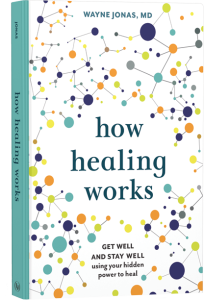It is no secret that medicine needs to be reimagined. For one, only about 15 to 20 percent of health-related outcomes are because of medical interventions. The rest are related to health behaviors such as diet, physical activity, smoking status, as well as the physical, social, and economic environment affecting a person’s ability to make healthy choices and access medical care.
Practicing an integrative health model requires restructuring the traditional patient/physician relationship and engaging the patient more in their own health and health care.
A 2013 editorial in the journal Health Affairs called patient engagement “the blockbuster drug of the century,” while the Institute of Medicine considers engaged patients “central to an effective, efficient, and continuously learning system.”
Engaged consumers are more motivated to:
- Take care of their health
- Make better day-to-day decisions about their health
- Are more likely to keep appointments
- Tend to be more satisfied with their care
- Experience fewer complications
- Have an improved quality of life.
They are also more likely to choose more conservative, less expensive interventions resulting in lower costs. One study found that individuals who were more knowledgeable, skilled, and confident about managing their health and health care had 21 percent lower costs than those with similar medical conditions and lower levels of engagement.
Healthcare’s Influence on How We Treat Patients
Why does this matter? Because you are now practicing—or soon will be practicing—in a value-based system, in which your reimbursement depends not on what you do but on how good your patient outcomes are and if you can lower overall costs.
For instance, beginning soon you’ll see lower Medicare payments but will have the potential for bonuses if you meet certain quality indicators. Guess what most of those indicators are for? Yes, chronic health issues. For instance, one high-priority measure is blood glucose management in patients with diabetes. And we know that lifestyle is a major component for the prevention and treatment of diabetes.
Responsibility for the health of a population—for both your individual and collective patients—is where health care is going. If you don’t begin to proactively manage their health, you will see your reimbursement fall. That’s why I developed the HOPE note—to act as a roadmap to help you successfully provide integrative care and to provide a simple tool with which to start.

Engage your Patients with the HOPE Note
HOPE stands for Healing Oriented Practices and Environments. The HOPE note is a tool I designed to elicit the information you need from a patient to better understand their issues beyond the regular medical visit.
The HOPE note is a patient-guided process designed to identify the patient’s values and goals in their life and for healing. Your role as the physician is to provide evidence and support to help them meet those goals.
The HOPE note addresses the social, behavioral, environmental, and spiritual components required for managing complex, chronic diseases. Working through the questions with the patient helps engage them in shared decision-making about their health and healing, putting them front and center in their care plan. Best of all, it brings out the patient’s own intuition about what they most need to heal and combines that with your knowledge of the evidence for what heals.
The goal is to reframe the patient/physician orientation from one of disease treatment to one that emphasizes health promotion and self-healing while integrating evidence-based complementary and lifestyle approaches into conventional medical care.
The HOPE Note Template
The following questions are used to guide the conversation between you and the patient during the HOPE consultation. Other questions can be added and personalized for each patient based on the individual’s personality, readiness to change, and circumstances.
Mind and Spirit
These questions address the patient’s goals for healing—their desires, beliefs, and needs. They are designed to reveal what the patient finds meaningful, what motivates them, and what provides them with a sense of well-being. In other words: “What matters?” versus “What’s the matter?”
- Why do you seek healing? What do you want to happen through health care?
- What are your plans and aspirations in life? What is your purpose? What do you find to be your most meaningful daily activities?
Social and Emotional
Social support is salutogenic. Healing and disease are intertwined with personal relationships and social support networks, including family, friends, and colleagues. With these questions, you are trying to capture the interpersonal components of the individual’s daily life.
- How is your social support? What are your social connections and relationships?
- Do you have family and friends with whom you can discuss your life events and feelings? Could you comfortably call up someone tomorrow if you needed their help? Are there people you have fun with? How often?
- Have you had any major social or physical traumas in the past? What was your childhood like? (This must be approached delicately, often prefaced with an explanation as to why in may be important to explore adverse childhood experiences.)
- Tell me about your family and friends? Do you have someone you talk with in confidence and trust?
Behavior and Lifestyle
Behavior and lifestyle can impact up to 70 percent of chronic illnesses; therefore, healthy behaviors are essential for creating health. But behavior change must be connected to what is meaningful for the person or it cannot be sustained. These questions provide a snapshot of the patient’s lifestyle which, when coupled with the patient’s motivations, provides a path forward for change.
- What do you do for stress management? How do you relax, reflect, and recreate?
- Do you smoke or drink alcohol or take drugs? If so, how much?
- How’s your diet? (Describe your last breakfast, lunch, and dinner)
- Do you exercise? If yes, what types and amounts?
- How is your sleep (quality and hours)? Do you wake refreshed?
- How much water, sugary drinks, and tea or coffee do you drink?
- Do you use complementary and alternative medicine? Do you take supplements?
Environment
The safety and security of one’s physical environment plays a greater role in health than many of us are aware of. For instance, an unsafe neighborhood could prevent someone from going on walks. A noisy apartment building along a busy road can aggravate asthma and other pulmonary conditions, as well as produce stress and lack of sleep.
- What is your home and work environment like?
- Is there a place at home where you can go and feel joyful and relaxed?
- What is your exposure to light, noise, clutter, music, colors, and art?
- How much contact with nature do you have?
- What is your exposure to toxins, especially heavy metals or endocrine-disrupting chemicals?
Before ending the visit, I will summarize the top three items that emerged from the conversation that the patient would like to work on by saying: “This is what I’ve heard. Is this right?” I then ask them to email me with what we have discussed and what are their top three items for action.
Having a conversation like this with your patients is crucial to their health. For more information on how to properly implement the HOPE Note into your practice, check out this guide.

Your Health Into Your Own Hands
Drawing on 40 years of research and patient care, Dr. Wayne Jonas explains how 80 percent of healing occurs organically and how to activate the healing process.

